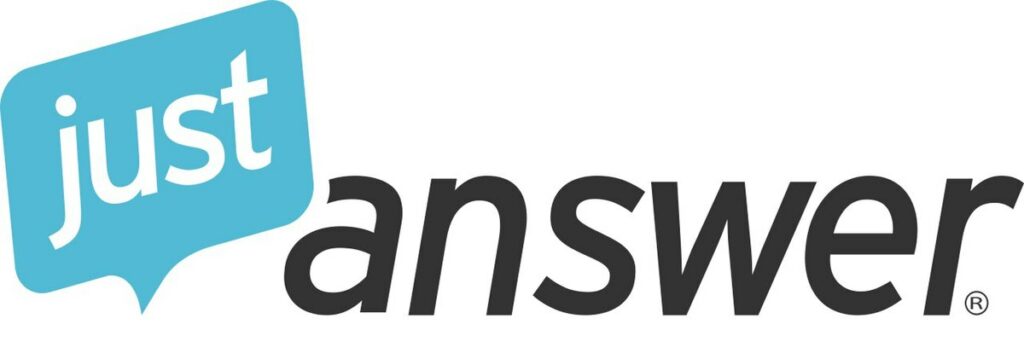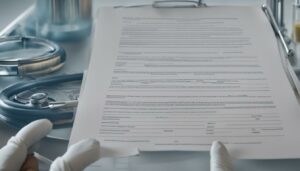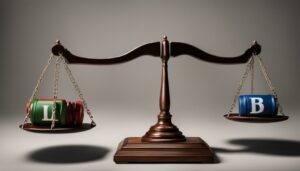Your credit report is a window into your financial life, providing valuable information to lenders, creditors, and even potential employers. It serves as a reflection of your creditworthiness, making it crucial to ensure its accuracy. Unfortunately, credit report errors can occur, potentially impacting your financial standing and opportunities.
In this comprehensive guide, we will delve into the world of disputing credit report errors. From understanding the importance of credit reports to navigating the dispute process, we will equip you with the knowledge and tools needed to rectify any inaccuracies and safeguard your financial future.
Understanding Credit Reports and Common Errors
Before we embark on the journey of disputing credit report errors, it is essential to comprehend the inner workings of credit reports and familiarize ourselves with the common errors that can plague them. A credit report comprises various components, including personal information, account history, public records, and inquiries. By gaining a comprehensive understanding of these elements, you will be better equipped to identify any discrepancies.
Within credit reports, several common errors can occur. These errors can range from incorrect personal information, such as misspelled names or outdated addresses, to inaccurate account information, such as closed accounts appearing as open or incorrect payment history. Additionally, duplicate accounts, fraudulent entries, and inaccurate public records can also find their way into your credit report, further adding to the potential for financial turmoil.
Gathering Evidence and Documentation
To initiate the dispute process, it is crucial to gather substantial evidence and documentation to support your claims. Regularly reviewing your credit reports from each of the major credit bureaus, namely Experian, Equifax, and TransUnion, is essential to identifying any errors promptly. By obtaining free copies of your credit reports, you can scrutinize each entry and make note of any discrepancies.
When reviewing your credit reports, pay close attention to the details. Look for inconsistencies in account balances, payment history, and any unfamiliar or unauthorized accounts. It is vital to document these errors and gather supporting evidence, such as bank statements, payment receipts, or correspondence with creditors. This documentation will serve as the backbone of your dispute, providing credibility to your claims.
Initiating the Dispute Process
Armed with evidence, it is time to embark on the journey of disputing credit report errors. The first step is to contact the credit bureaus, either through written correspondence or by utilizing their online dispute submission platforms. Crafting a well-structured and formal dispute letter is crucial, as it will serve as your official request for investigation.
In your dispute letter, provide a detailed explanation of each error, clearly outlining why you believe it to be inaccurate. Attach copies of the supporting evidence you have gathered, reinforcing your claims. It is essential to be thorough and concise in your communication, as this will facilitate a smoother investigation process.
Once you have submitted your dispute, each credit bureau will conduct an investigation into the errors you have raised. Generally, they have a legal obligation to investigate and respond within a specific timeframe, often 30 days. During this period, it is crucial to monitor any updates to your credit reports and maintain records of all communication with the credit bureaus.
Resolving Credit Report Errors and Protecting Your Credit
As the credit bureaus conduct their investigations, they will verify the disputed information with the relevant creditors and lenders. If the information is found to be inaccurate, they will take the necessary steps to correct or remove the errors from your credit report. It is important to note that the resolution process may vary in length, depending on the complexity of the errors and the responsiveness of the involved parties.
In addition to working with the credit bureaus, it is vital to communicate directly with the creditors and lenders involved in the errors. Notifying them of the dispute and providing them with any supporting documentation will expedite the resolution process. Requesting that they update their records accordingly will ensure that future credit checks reflect the accurate information.
Even after the credit report errors have been resolved, it is essential to remain vigilant. Regularly monitor your credit reports to ensure the accuracy of the updated information. If persistent errors or non-compliance are detected, promptly report them to the credit bureaus and take the necessary steps to rectify the situation.
Introduction to Disputing Credit Report Errors
Credit reports play a fundamental role in our financial lives, providing a comprehensive snapshot of our creditworthiness and financial history. These reports, compiled by credit bureaus like Experian, Equifax, and TransUnion, are utilized by lenders, creditors, and even potential employers to assess our creditworthiness and make important decisions. However, credit reports are not infallible and can sometimes contain errors that can have significant consequences for our financial well-being.
In this section, we will explore the importance of credit reports, define credit report errors, discuss their impact on individuals, and provide an overview of the dispute process. By understanding the significance of disputing credit report errors, you will be better equipped to navigate the intricacies of the process and protect your financial reputation.
Importance of a Credit Report
Your credit report is a powerful tool that provides a detailed account of your credit history, including information about your loans, credit card accounts, payment history, public records, and more. Lenders and creditors rely on this information to make informed decisions about extending credit, setting interest rates, and determining credit limits. Moreover, landlords, insurance companies, and even potential employers may also refer to your credit report to assess your financial responsibility and reliability.
Maintaining a healthy credit report is crucial for several reasons. A positive credit report can open doors to favorable loan terms, lower interest rates, and increased financial opportunities. On the other hand, a tarnished credit report, due to errors or negative information, can lead to higher interest rates, denial of credit applications, and limited access to financial resources.
Definition of Credit Report Errors
Credit report errors refer to inaccuracies or discrepancies found within the information presented in your credit report. These errors can range from minor mistakes, such as misspelled names or outdated addresses, to more significant issues, such as incorrect account balances, unauthorized accounts, or inaccurate payment history.
It is important to note that credit report errors can occur due to various reasons. Sometimes, errors stem from clerical mistakes made by creditors or credit bureaus during the data entry process. In other cases, errors may arise from identity theft or fraudulent activities. Regardless of the cause, it is crucial to address and rectify these errors promptly to prevent any adverse effects on your creditworthiness.
Impact of Credit Report Errors on Individuals
Credit report errors can have far-reaching consequences for individuals. Inaccurate information on your credit report can lower your credit score, making it challenging to obtain credit or secure favorable loan terms. This can be particularly detrimental when you are seeking a mortgage, auto loan, or other forms of credit that require a higher credit score for approval.
Furthermore, credit report errors can also lead to higher interest rates, which can significantly increase the cost of borrowing over time. Inaccurate negative information, such as late payments or delinquencies, can make you appear as a higher credit risk to lenders, resulting in unfavorable loan terms and conditions.
Beyond the financial implications, credit report errors can also impact other areas of your life. Landlords may reject rental applications based on erroneous negative information, insurance companies may charge higher premiums, and potential employers may question your financial responsibility, potentially impacting your chances of securing employment.
Overview of the Dispute Process
Fortunately, there are mechanisms in place to address credit report errors and rectify inaccuracies. The dispute process allows individuals to challenge and correct any erroneous information on their credit reports. This process involves communication with the credit bureaus, providing supporting documentation, and closely monitoring the progress of the dispute.
In the upcoming sections of this guide, we will delve into each step of the dispute process, providing detailed instructions, tips, and strategies to help you effectively dispute credit report errors. By gaining a comprehensive understanding of the process, you will be empowered to take control of your creditworthiness and ensure the accuracy of your credit report.
Understanding Credit Reports and Common Errors
Credit reports are comprehensive documents that provide a detailed overview of an individual’s credit history and financial behavior. Understanding the components of a credit report is essential to recognize and address any potential errors that may arise. In this section, we will explore the various elements of credit reports and delve into the common errors that individuals may encounter.
Explanation of Credit Reports and Their Components
A credit report is essentially a record of an individual’s credit history, compiled by credit bureaus. It contains several important components that lenders and creditors use to evaluate creditworthiness. Let’s take a closer look at these components:
Personal Information: This section includes details such as your name, address, date of birth, Social Security number, and employment history. It is crucial to ensure that this information is accurate as it helps to identify you correctly.
Account History: This section provides a comprehensive overview of your credit accounts, including credit cards, loans, mortgages, and other lines of credit. It includes information about the account balance, credit limit, payment history, and any late payments or delinquencies.
Public Records: Public records encompass any legal actions or financial obligations that have been made public, such as bankruptcies, tax liens, or court judgments. These records can have a significant impact on your creditworthiness and should be monitored closely for accuracy.
Inquiries: This section lists the entities that have accessed your credit report. There are two types of inquiries: hard inquiries and soft inquiries. Hard inquiries occur when you apply for credit, such as a loan or credit card, and they can temporarily impact your credit score. Soft inquiries, on the other hand, occur when companies check your credit report for pre-approved offers or background checks and do not affect your credit score.
Identification of Common Credit Report Errors
Despite efforts to maintain accurate credit reports, errors can still occur due to various factors. It is essential to be aware of the common credit report errors that individuals may encounter. Here are some of the most frequent errors:
Incorrect Personal Information: Misspelled names, outdated addresses, or incorrect Social Security numbers can lead to confusion and potential mix-ups with other individuals’ credit information.
Outdated or Inaccurate Account Information: This type of error may include closed accounts appearing as open, incorrect payment history, or inaccurate account balances. These inaccuracies can negatively impact your credit score and lenders’ perception of your creditworthiness.
Duplicate Accounts or Incorrect Balances: Duplications can occur when the same account is listed multiple times, leading to inflated credit utilization ratios and potential credit score discrepancies. Incorrect balances can also misrepresent your creditworthiness and financial standing.
Inclusion of Fraudulent or Unauthorized Accounts: Identity theft is a prevalent issue, and it can result in fraudulent accounts being opened in your name. These unauthorized accounts can significantly impact your credit and financial well-being if not addressed promptly.
Inaccurate Public Records Information: Public records, such as bankruptcies or tax liens, should be accurately reflected in your credit report. Errors in this section can have severe consequences and should be rectified as soon as possible.
By familiarizing yourself with these common credit report errors, you can be proactive in identifying them and taking the necessary steps to dispute and rectify any inaccuracies. Regularly reviewing your credit report is crucial to catching these errors early and ensuring the accuracy of your credit profile.
Gathering Evidence and Documentation
Once you have identified errors in your credit report, it is crucial to gather evidence and documentation to support your dispute. This evidence will serve as the foundation of your case and help substantiate your claims. In this section, we will delve into the importance of reviewing credit reports regularly, the steps to obtain free credit reports, tips for reviewing credit reports, and the process of documenting evidence.
Importance of Reviewing Credit Reports Regularly
Regularly reviewing your credit reports is a proactive step in maintaining accurate and up-to-date credit information. By monitoring your credit reports, you can quickly identify any errors, discrepancies, or signs of potential fraudulent activity. It is recommended to review your credit reports at least once a year, if not more frequently, to stay informed about your credit status and ensure the accuracy of the information contained within.
Steps to Obtain a Free Credit Report from Each Credit Bureau
The Fair Credit Reporting Act (FCRA) grants individuals the right to obtain a free copy of their credit report from each of the major credit bureaus—Experian, Equifax, and TransUnion—once every 12 months. To obtain your free credit reports, follow these steps:
AnnualCreditReport.com: Visit the official website, AnnualCreditReport.com, which is the only authorized source for free credit reports. Beware of other websites that may charge fees or require subscriptions.
Requesting Credit Reports: Select the option to request your credit reports from all three credit bureaus. You will be redirected to each respective credit bureau’s website to complete the process.
Verification Process: Provide the necessary personal information, including your name, address, date of birth, and Social Security number. The credit bureaus may ask additional security questions to verify your identity.
Accessing Credit Reports: Once your identity is verified, you will be able to access and download your credit reports from each credit bureau. It is recommended to save electronic copies or print physical copies for future reference.
By obtaining your free credit reports, you can begin the process of reviewing and scrutinizing the information contained within, identifying any errors or discrepancies that require your attention.
Tips for Reviewing Credit Reports and Identifying Errors
When reviewing your credit reports, it is essential to approach the process with meticulous attention to detail. Here are some tips to help you navigate the review process effectively:
Check Personal Information: Begin by reviewing the personal information section of your credit reports, including your name, address, and Social Security number. Ensure that the details are accurate and up to date. Any errors in this section can lead to confusion and potentially mix your credit information with someone else’s.
Examine Account Information: Scrutinize the account information section of your credit reports, which includes details about your credit accounts, such as balances, payment history, and account status. Pay close attention to any discrepancies, such as incorrect account balances or late payments that you believe to be inaccurate.
Look for Unauthorized Accounts: Thoroughly review the list of accounts on your credit reports and verify that each account belongs to you. Look out for any unfamiliar or unauthorized accounts that may indicate potential identity theft or fraudulent activity.
Verify Public Records: If your credit reports include a public records section, carefully review it for any inaccuracies related to bankruptcies, tax liens, or court judgments. Ensure that any public records information is correct and up to date.
By following these tips, you can enhance your ability to identify credit report errors and gather the necessary evidence to support your dispute.
Documenting Evidence of Credit Report Errors
When disputing credit report errors, it is crucial to document and organize the evidence that supports your claims. This documentation will serve as a backbone for your dispute and provide credibility to your case. Here are some steps to help you effectively document evidence:
Gather Supporting Documents: Collect any relevant supporting documents that validate your dispute. This may include bank statements, payment receipts, correspondence with creditors, or any other documentation that can prove the accuracy of your claim.
Organize and Label: Sort and label your supporting documents in a clear and logical manner. This will make it easier to reference specific pieces of evidence during the dispute process.
Make Copies: Create copies of all your supporting documents and keep them in a secure location. These copies will serve as a backup in case the original documents are lost or misplaced during the dispute process.
Maintain Records of Communication: Keep a record of all communication related to your dispute, including correspondence with the credit bureaus, creditors, and any other parties involved. This documentation will help you track the progress of your dispute and serve as evidence of your efforts to rectify the errors.
By diligently documenting evidence and organizing your supporting documents, you will be well-prepared to present a strong case during the dispute process.

Initiating the Dispute Process
With your evidence and documentation in hand, it is time to initiate the dispute process and challenge the credit report errors that you have identified. In this section, we will explore the steps involved in contacting the credit bureaus, providing necessary information and documentation, understanding timelines and expectations, and following up on the dispute process.
Contacting the Credit Bureaus
The first step in initiating the dispute process is to contact the credit bureaus that have reported the errors in your credit report. You can choose to communicate with them through written correspondence or by utilizing their online dispute submission platforms. Here are the primary methods of contacting the credit bureaus:
Written Dispute Letter: Composing a formal dispute letter is a common method of initiating the dispute process. Your dispute letter should clearly state the errors you have identified, provide a detailed explanation of why you believe the information is inaccurate, and request that the credit bureau thoroughly investigate and correct the errors. Be sure to include your contact information, account numbers, and any supporting documentation that you have gathered.
Online Dispute Submission: Many credit bureaus offer online dispute submission platforms, which provide a convenient and efficient way to initiate disputes. Through these platforms, you can fill out online forms, provide detailed explanations of the errors, and upload supporting documentation. Make sure to follow the instructions provided by the credit bureau and provide all the necessary information to expedite the process.
Providing Necessary Information and Documentation
When contacting the credit bureaus, it is crucial to provide them with all the necessary information and documentation to support your dispute. This will help strengthen your case and increase the chances of a successful resolution. Here are some essential elements to include:
Detailed Explanation of Each Error: Clearly outline each error you have identified in your credit report. Provide a concise yet comprehensive explanation of why you believe the information to be inaccurate. Be specific and reference supporting evidence whenever possible.
Attaching Supporting Evidence: Include copies of the supporting documentation you have gathered to substantiate your claims. These documents can include bank statements, payment receipts, correspondence with creditors, and any other relevant information that proves the accuracy of your dispute.
By providing a clear and detailed explanation of each error and attaching supporting evidence, you will present a strong case to the credit bureaus and increase the likelihood of a successful resolution.
Timelines and Expectations for Credit Bureau Response
Once you have submitted your dispute, the credit bureaus have a legal obligation under the Fair Credit Reporting Act (FCRA) to investigate the errors and provide a response within a specific timeframe. Typically, this timeframe is around 30 days, although it can vary depending on the complexity of the dispute and the credit bureau’s workload.
During this period, it is essential to exercise patience and allow the credit bureaus sufficient time to conduct their investigation. While waiting for a response, it is recommended to maintain regular communication with the credit bureaus and keep records of all correspondence.
Following Up on the Dispute Process
As the credit bureaus investigate the errors, it is important to stay engaged and follow up on the progress of your dispute. Here are some steps to consider:
Monitoring Credit Report Updates: Regularly check your credit reports to see if any updates or corrections have been made. Keep in mind that the credit bureaus are required to provide you with a free copy of your credit report if changes have been made as a result of your dispute.
Resubmitting Disputes if Necessary: If you find that the errors have not been resolved or that new errors have appeared in your credit reports, you may need to resubmit your disputes. Be persistent in your efforts to rectify the inaccuracies and ensure that your credit reports reflect accurate information.
By actively monitoring the progress of your dispute and following up with the credit bureaus, you demonstrate your commitment to resolving the errors and protecting the accuracy of your credit reports.
Resolving Credit Report Errors and Protecting Your Credit
Once you have initiated the dispute process and provided all the necessary information and documentation, it is time to focus on resolving the credit report errors. In this section, we will explore the credit bureau investigation process, communicating with creditors and lenders, monitoring credit reports post-dispute resolution, and protecting your credit for the long term.
Credit Bureau Investigation Process
After receiving your dispute, the credit bureaus are legally obligated to conduct an investigation into the errors you have raised. During this process, they will contact the relevant creditors, lenders, and data furnishers to verify the accuracy of the disputed information. The investigation typically involves the following steps:
Verification of Disputed Information: The credit bureaus will contact the entities that have reported the disputed information and request verification. This includes reviewing the account details, payment history, and any other relevant information to determine the accuracy of the reported data.
Correcting or Removing Errors from the Credit Report: If the disputed information is found to be inaccurate, the credit bureaus will take the necessary steps to correct or remove the errors from your credit report. This may involve updating account balances, removing late payments, or deleting unauthorized accounts.
It’s important to note that the resolution process can vary in length, depending on the complexity of the errors and the responsiveness of the involved parties. However, the credit bureaus are required to provide you with a written response detailing the results of their investigation within the specified timeframe.
Communicating with Creditors and Lenders
While the credit bureaus handle the investigation process, it is also crucial to communicate directly with the creditors and lenders involved in the errors. Notifying them of the dispute and providing any supporting documentation can help expedite the resolution and ensure that the corrected information is updated in their records. Here are some steps to consider when communicating with creditors and lenders:
Notifying Them of the Dispute: Send a written letter or contact the creditors and lenders directly to inform them about the errors that have been disputed with the credit bureaus. Clearly explain the inaccuracies and provide any supporting evidence you have gathered.
Requesting Corrections or Updates: Ask the creditors and lenders to update their records to reflect the corrected information. This is particularly important for accounts that are still active or those that may be affected by the errors in question.
Maintaining open lines of communication with the creditors and lenders will help ensure that the corrected information is accurately reflected in their records and future credit checks.
Monitoring Credit Reports Post-Dispute Resolution
Once the credit bureaus have completed their investigation and made the necessary corrections to your credit reports, it is crucial to continue monitoring them. Regularly checking your credit reports will allow you to verify the accuracy of the updated information and ensure that the errors have been successfully resolved. Here are some steps to consider when monitoring your credit reports:
Ensuring Accuracy of Updated Credit Reports: Review the updated credit reports to ensure that the errors have been corrected or removed as expected. Check that account balances, payment history, and other relevant information accurately reflect your financial activity.
Reporting Persistent Errors or Non-Compliance: If you find that the errors persist or that the credit bureaus or creditors have not complied with the corrections, promptly report the issue to the credit bureaus. They have a responsibility to investigate and address ongoing inaccuracies.
By diligently monitoring your credit reports, you can stay informed about your credit status and take immediate action if any new errors or discrepancies arise.
Protecting and Maintaining a Healthy Credit History
Beyond resolving credit report errors, it is crucial to take proactive steps to protect and maintain a healthy credit history. Here are some tips to help you protect your credit for the long term:
Tips for Improving Credit Score: Implement responsible credit habits to improve your credit score. This includes making payments on time, keeping credit card balances low, and avoiding excessive credit applications.
Regularly Reviewing and Monitoring Credit Reports: Continuously review your credit reports to identify any new errors or potential signs of identity theft. Consider using a credit monitoring service to receive alerts about changes to your credit reports.
By following these tips and staying vigilant, you can safeguard your credit and financial well-being over time.
As we near the conclusion of this guide, we have explored the process of disputing credit report errors, from understanding credit reports and common errors to gathering evidence, initiating the dispute process, and resolving the errors. In the final section, we will recap the importance of disputing credit report errors and provide some final thoughts and recommendations.
Conclusion
In this comprehensive guide, we have explored the intricate process of disputing credit report errors. We began by understanding the importance of credit reports and the potential impact that errors can have on individuals. We then delved into the various components of credit reports and identified common errors that can occur.
With a firm understanding of credit reports and common errors, we moved on to discussing the importance of regularly reviewing credit reports and obtaining free copies from each credit bureau. We provided tips on how to effectively review credit reports and identify errors, as well as the significance of gathering evidence and documentation to support your dispute.
Next, we explored the steps involved in initiating the dispute process, including contacting the credit bureaus and providing necessary information and documentation. We discussed the timelines and expectations for credit bureau responses and highlighted the importance of following up on the dispute process.
Moving forward, we focused on resolving credit report errors and protecting your credit. We examined the credit bureau investigation process and the role of communication with creditors and lenders in ensuring accurate information is reflected in your credit reports. Additionally, we emphasized the importance of monitoring credit reports post-dispute resolution to verify the accuracy of the updated information and take action if persistent errors or non-compliance are detected.
Finally, we discussed the significance of protecting and maintaining a healthy credit history. By implementing responsible credit habits and regularly monitoring your credit reports, you can safeguard your credit and financial well-being.
In conclusion, disputing credit report errors is a crucial step in maintaining a healthy financial profile. By understanding credit reports, diligently reviewing them, and taking prompt action to address any inaccuracies, you can assert control over your creditworthiness and ensure the accuracy of your credit reports. Remember, your credit report is a reflection of your financial history, and it is your right to dispute any errors that may arise.
We hope that this guide has provided you with valuable insights, practical tips, and the confidence to navigate the dispute process. Take control of your credit, protect your financial future, and pave the way towards a brighter and more stable financial life.
This article serves as part of our legal framework blog posts.










